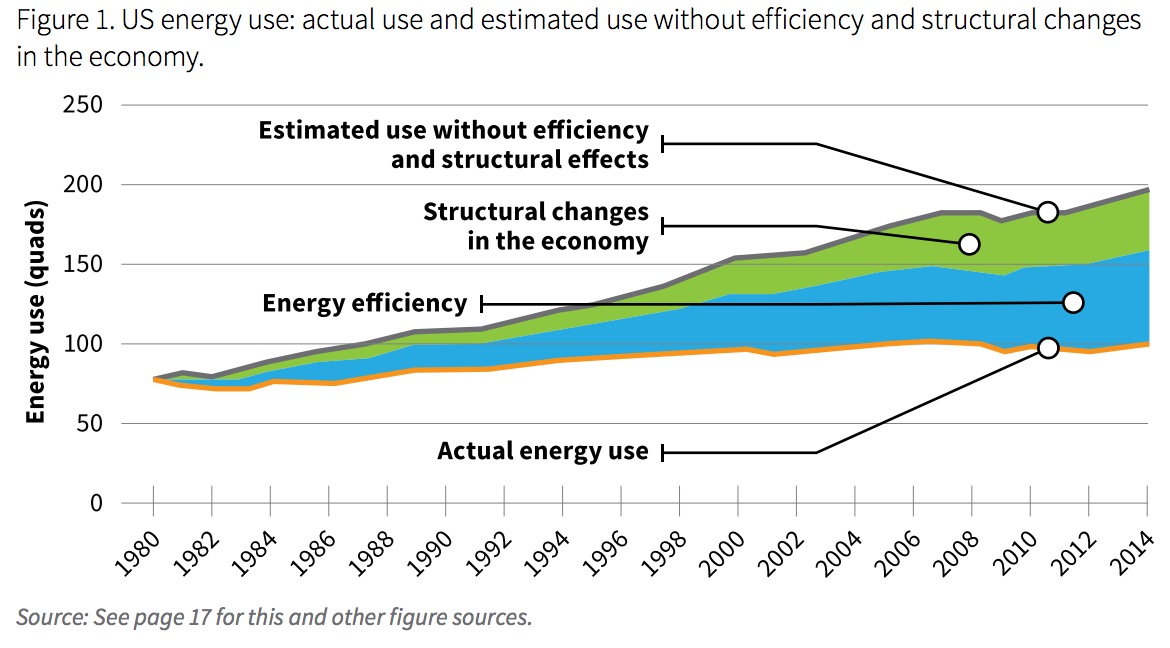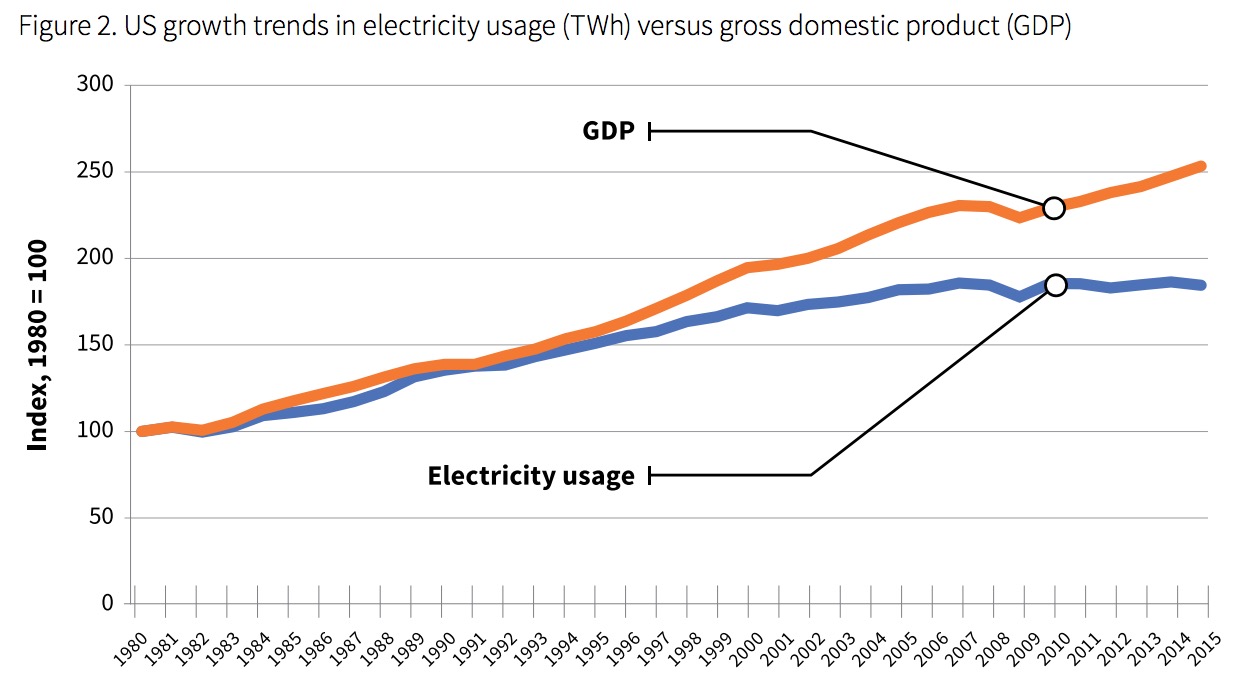AMERICAN COUNCIL FOR AN ENERGY EFFICIENT ECONOMY (ACEEE)
The energy efficiency success story
An invisible resource is working quietly behind the scenes to provide American families and businesses with the power necessary to live and work. This resource lowers harmful pollution, creates US jobs, reduces energy burdens for those most in need, and strengthens community resilience. It also improves the bottom line for business, returns at least double its investment, and saves American households, on average, $840 dollars a year. Energy efficiency has become the nation’s third-largest electricity resource. With increased support it could become the largest—and one of the world’s core strategies to tackle climate change.
What is energy efficiency?
Energy efficiency is the use of less energy to provide the same or better products, services, or amenities. Increasing efficiency allows more control over energy use, lowers costs, and provides multiple benefits for households, businesses, and the environment. For example, adding insulation to a home improves both its efficiency and its comfort. Increasing the efficiency of a manufacturing process can enhance the competitiveness of the plant. And by lowering energy use, all forms of energy efficiency cut pollution.
For the past 40 years, energy efficiency has been a quiet success story in America’s energy sector. As the 1973 oil crisis put pressure on energy security and as prices spiked, consumers looked for ways to conserve energy and reduce environmental impacts. In response, a diverse group of scientists, analysts, and policymakers began to develop strategies to reduce energy waste and use less energy to deliver the same or better services to consumers and businesses. Today, energy-efficient technologies, policies, and programs impact everyone and have greatly influenced utilities, building designers, industrial planners, and manufacturers. The result has been an unqualified success story, both economically and environmentally, although one often unseen by the public.
The US economy grew without runaway energy use
One way to see energy efficiency’s effects is to look at the relationship between energy use and gross domestic product (GDP). From 1980 to 2014, our GDP increased by 149% while energy use in the United States increased by just 26%, from 78 quads (or a quadrillion Btus) to 98 quads, as shown in figure 1. 
While the improvement in energy used per unit of GDP was partly due to structural changes in the economy, such as a shift away from some energy-intensive sectors like heavy manufacturing to service industries, energy efficiency was an important contributor to this trend.2 If we continued using energy at the same rate per unit of GDP, in 2014 the United States would have used 195 quads. When we factor out structural change, we are left with efficiency-related savings of about 58 quads, which is more than half of today’s energy consumption.
In the electricity sector, which is the focus of this paper, we see another sign of major progress. Total demand for electricity has flattened in recent years even as the economy, measured by GDP, has grown (see figure 2).3 While this trend is driven by many factors, such as annual differences in weather and changes in the structure of the economy, a large part is due to energy efficiency policies and programs that have helped lead to more energy-efficient products and services. Stronger energy efficiency policies and programs have become even more widespread in the last decade.

About the American Council for an Energy-Efficient Economy (ACEEE)
aceee.org
The American Council for an Energy-Efficient Economy (ACEEE), a nonprofit, 501(c)(3) organization, acts as a catalyst to advance energy efficiency policies, programs, technologies, investments, and behaviors. We believe that the United States can harness the full potential of energy efficiency to achieve greater economic prosperity, energy security, and environmental protection for all its people.
Tags: ACEEE, American Council for an Energy-Efficient Economy, Energy efficiency






 RSS Feed
RSS Feed